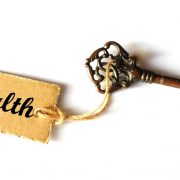How One Hour Could Save Your Life
October may have been breast cancer awareness month, but anytime is the right time to protect your health. Approximately one in eight women will be diagnosed with breast cancer in their lifetime. And the best defense against this disease is to know the risks, recognize the early symptoms, and act on early detection.
Know the risk factors.
There are a variety of risk factors for breast cancer, this includes aging, having dense breasts, and genetic mutations on specific genes, such as BRCA1 and BRCA2. Having no children or a first child after age 30 also raises a person’s risk of breast cancer. Some controllable risk factors include not being physically active, being overweight after menopause and drinking alcohol. Having a personal or family history of breast cancer and the use of certain drugs or hormone therapies also increase a person’s risk.
Recognize the symptoms.
The most well-known sign is a lump in or near the breast. Other symptoms include a change in the size or shape of the breast, dimples in the breast that look like the skin of an orange and a nipple that is turned inward. Fluid, other than breast milk, coming from the nipple is also a possible sign of breast cancer, especially if the fluid is bloody. Breast cancer can also cause scaly, red or swollen skin on the breast, nipple or areola.
Take measures for early detection.
Getting screened for breast cancer is vital to catch and treat the disease early. “With breast cancer being the leading cause of cancer death in women, it’s important to continually promote the importance of early detection and treatment,” said Tonya Mays, assistant director of nursing at Desert Terrace Healthcare Center. “When detected early, breast cancer is treated successfully 98 percent of the time.”
Studies show that 24 percent of breast cancer cases are diagnosed in women aged 70 to 84-years-old, so this is a lifesaving message for women of all ages and for the people who love them. The gold standard for breast cancer detection is the mammogram, with both 2D and 3D mammogram testing available. Other methods include ultrasound, MRI, blood chemistry studies and a biopsy.
Treatment
Several types of treatment are standard for breast cancer. If breast cancer is detected, a team of specialists including oncologists, nurses, and other professionals will work together with the patient to decide the best course of treatment. A patient may undergo surgery, radiation therapy, chemotherapy, hormone therapy or targeted therapy using drugs or other substances to attack specific cancer cells. The treatment team, along with the patient, will determine which treatment, or combination of treatment methods, will work best.
Prognosis
Although a cancer diagnosis is frightening, it isn’t a death sentence. The survival rates for women with breast cancer vary based on the stage of cancer, but the five-year survival rate can be high. For women with stage II cancer, the survival rate is 93 percent. The rate is 72 percent for stage III but drops to 22 percent for stage IV. Of course, every person’s case is unique, and these rates are only estimates. Each person’s team of specialists will have the best knowledge of their case and can give a better assessment of their prognosis.
Now is the time to make a commitment to yourself, and those you love, to make your health a top priority. By knowing the signs and symptoms of breast cancer and scheduling regular screenings, you are on the right track to better health.






